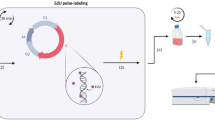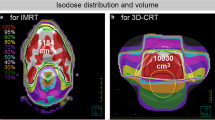Summary
DNA damage response (DDR) in different cell cycle status of human peripheral blood lymphocytes (PBLs) and the role of H2AX in DDR were investigated. The PBLs were stimulated into cell cycle with phytohemagglutinin (PHA). The apoptotic ratio and the phosphorylation H2AX (S139) were flow cytometrically measured in resting and proliferating PBLs after treatment with camptothecin (CPT) or X-ray. The expressions of γH2AX, Bcl-2, caspase-3 and caspase-9 were detected by Western blotting. DDR in 293T cells was detected after H2AX was silenced by RNAi method. Our results showed that DNA double strand breaks (DSBs) were both induced in quiescent and proliferating PBLs after CPT or X-ray treatment. The phosphorylation of H2AX and apoptosis were more sensitive in proliferating PBLs compared with quiescent lymphocytes (P<0.05). The expression levels of anti-apoptotic proteins Bcl-2 were reduced and cleaved caspase-3 and caspase-9 were increased. No significant changes were observed in CPT-induced apoptosis in 293T cells between H2AX knocking down group and controls. It was concluded that proliferating PBLs were more vulnerable to DNA damage compared to non-stimulated lymphocytes and had higher apoptosis rates. γH2AX may only serve as a marker of DNA damage but exert no effect on apoptosis regulation.
Similar content being viewed by others
References
Mohrin M, Bourke E, Alexander D, et al. Hematopoietic stem cell quiescence promotes error-prone DNA repair and mutagenesis. Cell Stem Cell, 2010,7(2):174–185
Goldberg M, Stucki M, Falck J, et al. MDC1 is required for the intra-S-phase DNA damage checkpoint. Nature, 2003,421(6926):952–956
Lewensohn R, Killander D, Ringborg U, et al. Increase of UV-induced DNA repair synthesis during blast transformation of human lymphocytes. Exp Cell Res, 1979, 123(1):107–110
Boerrigter ME, Vijg J. Single-strand break disappearance in quiescent and phytohaemagglutinin-stimulated human peripheral blood lymphocytes exposed to a single low dose of gamma-radiation. Int J Radiat Biol, 1992,61(1): 95–101
Mayer C, Popanda O, Zelezny O, et al. DNA repair capacity after gamma-irradiation and expression profiles of DNA repair genes in resting and proliferating human peripheral blood lymphocytes. DNA Repair (Amst), 2002,1(3):237–250
Green MH, Lowe JE, Harcourt SA, et al. UV-C sensitivity of unstimulated and stimulated human lymphocytes from normal and xeroderma pigmentosum donors in the comet assay: a potential diagnostic technique. Mutat Res, 1992, 273(2):137–144
Kodym E, Kodym R, Reis AE, et al. The small-molecule CDK inhibitor, SNS-032, enhances cellular radiosensitivity in quiescent and hypoxic non-small cell lung cancer cells. Lung Cancer, 2009,66(1):37–47
Fernandez-Capetillo O, Lee A, Nussenzweig M, et al. H2AX: the histone guardian of the genome. DNA Repair (Amst), 2004,3(8–9):959–967
Rogakou EP, Pilch DR, Orr AH, et al. DNA double-stranded breaks induce histone H2AX phosphorylation on serine 139. J Biol Chem, 1998,273(10):5858–5868
Wang H, Wang M, lliakis G, et al. Complex H2AX phosphorylation patterns by multiple kinases including ATM and DNA-PK in human cells exposed to ionizing radiation and treated with kinase inhibitors. J Cell Physiol, 2005,202(2):492–502
Modesti M, Kanaar R. DNA repair: spot (light) s on chromatin. Curr Biol, 2001,11(6):R229–232
Paull TT, Rogakou EP, Yamazaki V, et al. A critical role for histone H2AX in recruitment of repair factors to nuclear foci after DNA damage. Curr Biol, 2000,10(15): 886–895
Van Gent DC, Hoeijmakers JH, Kanaar R. Chromosomal stability and the DNA double-stranded break connection. Nat Rev Genet, 2001,2(3):196–206
Carloni M, Meschini R, Ovidi L, et al. PHA-induced cell proliferation rescues human peripheral blood lymphocytes from X-ray-induced apoptosis. Mutagenesis, 2001,16(2): 115–120
Cook PJ, Ju BG, Telese F, et al. Tyrosine dephosphorylation of H2AX modulates apoptosis and survival decisions. Nature, 2009,458(7238):591–596
Banáth JP, Olive PL. Expression of phosphorylated histone H2AX as a surrogate of cell killing by drugs that create DNA double-strand breaks. Cancer Res, 2003,63(15): 4347–4350
Martinou JC, Green DR. Breaking the mitochondrial barrier. Nat Rev Mol Cell Biol, 2001,2(1):63–67
Griffiths GJ, Dubrez L, Morgan CP, et al. Cell damage-induced conformational changes of the pro-apoptotic protein Bak in vivo precede the onset of apoptosis. J Cell Biol, 1999,144(5):903–914
Li P, Nijhawan D, Budihardho I, et al. Cytochrome c and dATP-dependent formation of Apaf-1/caspase-9 complex initiates an apoptotic protease cascade. Cell, 1997,91(4): 479–489
Shimizu S, Narita M, Tsujimoto Y. Bcl-2 family proteins regulate the release of apoptogenic cytochrome c by the mitochondrial channel VDAC. Nature, 1999,399(6735):483–487
Feng Y, Wu J, Gong J, et al. Timing of apoptosis onset depends on cell cycle progression in peripheral blood lymphocytes and lymphocytic leukemia cells. Oncol Reports, 2007,17(6):1437–1444
Nurse P. Checkpoint pathways come of age. Cell, 1997, 91(7):865–867
Hartmwll L. Defects in a cell cycle checkpoint may be responsible for the genomic instability of cancer cells. Cell, 1992,71(4):543–546
Pawlik TM, Keyomarsi K. Role of cell cycle in mediating sensitivity to radiotherapy. Int J Radiat Oncol Biol Phys, 2004,59(4):928–942
Marx J. How cells cycle toward cancer. Science, 1994, 263(5145):319–321
Pang R, Law WL, Chu AC, et al. A subpopulation of CD26+ cancer stem cells with metastatic capacity in human colorectal cancer. Cell Stem Cell, 2010,6(6):603–615
Dalerba P, Dylla SJ, Park IK, et al. Phenotypic characterization of human colorectal cancer stem cells. Proc Natl Acad Sci USA, 2007,104(24):10158–10163
O’Brien CA, Pollett A, Gallinger S, et al. A human colon cancer cell capable of initiating tumour growth in immunodeficient mice. Nature, 2007,445(7123):106–110
Hermann PC, Huber SL, Herrler T, et al. Distinct populations of cancer stem cells determine tumor growth and metastatic activity in human pancreatic cancer. Cell Stem cell, 2007,1(3):313–323
Huyen Y, Zgheib O, Ditullio RA Jr, et al. Methylated lysine 79 of histone H3 targets 53BP1 to DNA double-strand breaks. Nature, 2004,432(7015):406–411
Author information
Authors and Affiliations
Corresponding author
Additional information
This project was supported by grants from Program 973 from Ministry of Science and Technology of China (Nos. 2004CB518705, 2009CB5218702), and the National Natural Sciences Foundation of China (Nos. 30872472, 30800569).
Rights and permissions
About this article
Cite this article
Tian, M., Feng, Y., Min, J. et al. DNA damage response in resting and proliferating peripheral blood lymphocytes treated by camptothecin or X-ray. J. Huazhong Univ. Sci. Technol. [Med. Sci.] 31, 147–153 (2011). https://doi.org/10.1007/s11596-011-0241-6
Received:
Published:
Issue Date:
DOI: https://doi.org/10.1007/s11596-011-0241-6




